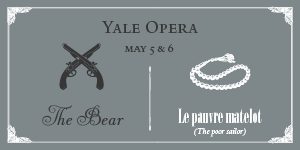E ach day inside Yale’s stately Old Campus, students, locals and tourists lounge, stroll and take photos. They come and go as they please, but few likely register the point that they do so through heavy stone walls pierced only by occasional breaks, which are in turn spanned by sturdy wrought iron gates.
When the university decided to pursue the quadrangle model and enclose its residential areas in the 1870s, you might think it was done in an effort to secure students from local elements. And it was. But it was also intended to protect townspeople from students. Several clashes between town and gown had ended in disaster for both sides, even creating what one commentator dramatically called the “Twenty-Years War”—though it was arguably more like 40.
sponsored by
The first major conflict started on January 10, 1824, with a macabre robbery. Buried on New Year’s Day, the body of local teenager Bathsheba Smith, who died of unknown causes, was stolen from her grave in West Haven. The theft was discovered because residents noticed the odd passing of a wagon near the cemetery in the middle of the night, and because daylight revealed that the grave had been unsealed.
City constable Erastus Osborn took the case on January 12, and he pursued what was apparently a plausible theory of the era: that, with legally useable human remains in low supply, the culprits were probably medical students eager to dissect an actual human body. With the aid of the girl’s father and more resistant help of a Yale anatomy professor, Osborn scoured the grounds of the Medical Institution of Yale College, now called the Yale School of Medicine.
Like many grisly tales, the search ended in a dark, low place: one of the school’s cellars, where the girl’s corpse was discovered. Wrapped in white cloth and hastily hidden beneath the floor’s paving stones, its finders tried to remove the body quietly, but as the wagon returning it passed through the city, news of what had been found—and where—was spreading.
sponsored by
Enraged New Haveners responded by besieging the medical school throughout the day and into the night, flinging stones and flaming coals at the students hiding within. The Governor’s Foot Guard was assembled on the Green and marched to the scene, where it dispersed the crowd in the early morning.
Two unnamed students, presumably the main culprits, fled New Haven, while Ephraim Colburn, an assistant at the Institution, was sentenced to nine months in prison for his alleged part in the scheme. Had he been acquitted, it seems likely he would’ve faced vigilante justice anyway: During his trial, townspeople armed with tar and feathers stood outside the court.
Later dubbed The Dissection Riot of 1824, the city’s siege of the school sent shockwaves through New Haven. As the Columbian Register declared on January 17, “We have never known so great an excitement in the city on any occasion as we have witnessed during the past week.”’
The Register would have to wait more than 17 years for another similar “excitement.” On October 30, 1841, the New Haven fire department was on parade and some of its fighters decided to show off the power of their fire hoses to reach the spire of Center Church. Perhaps to some embarrassment, the water flow was weaker than expected, and a quick investigation revealed the source of the issue: Yale students playing a ball game and stepping on the hose. The firemen confiscated the students’ ball, and the ensuing brawl ended with three students in jail.
But the students would have their revenge—and, in the doing, lay the foundation for a decades-long feud between Yale undergraduates and local firefighters. Breaking into a city firehouse on High Street that very night, they trashed it, stole the company’s heavy hand-drawn fire engine—“a beautiful engine and the best in the city,” according to a witness—and destroyed it with axes.
Locals were outraged. A crowd of thousands formed around Yale for the next two days, as panicked students gathered “clubs, firearms, knives and brickbats” to use against any attackers. The city militia was again called out to protect the school, and Yale’s administration promised to pay for the destroyed engine, which appeased many of the rioters.
But the war between town and gown was far from over. Over the next 13 years, through much minor heckling and skirmishing, the stage was set for the next big battle—whose drama we’ll relate tomorrow.
Written by Anne Ewbank. Image shows detail of “The American Fireman: Always Ready” (Currier & Ives, 1858).













